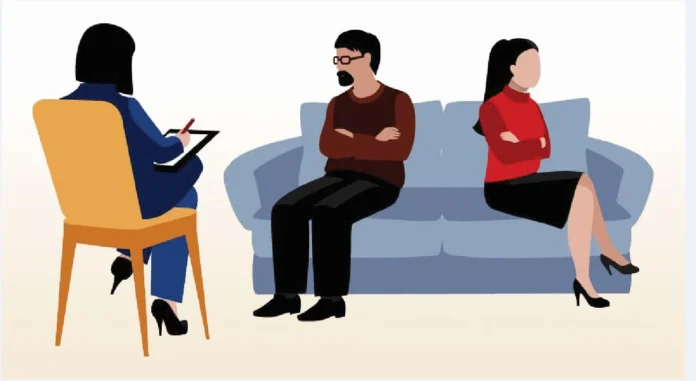By Dr Swati Jindal Garg
Sandra Day O’Connor, former Associate Justice of the US Supreme Court, once said: “The courts of this country should not be the places where resolution of disputes begins. They should be the places where the disputes end after alternative methods of resolving disputes have been considered and tried.”
Taking a cue from this philosophy, Justice KV Viswanathan of the Supreme Court recently emphasized that mediation in matrimonial disputes is not limited to reunification. An amicable separation, he observed, is just as legitimate and often more realistic. His words reaffirmed the human, rather than legalistic, value of closure—especially for couples who have spent years entangled in acrimonious court battles.
A MISUNDERSTOOD TOOL
The Supreme Court, while hearing a transfer petition, pointed out a widespread misunderstanding around the concept of mediation in divorce cases. “The moment we say mediation, they think we are asking them to be together. We are not interested whether they are together or separate. We just want a solution to the matter…” The focus, the top court noted, is on resolving disputes—not necessarily saving marriages.
LEGAL BACKING FOR MEDIATION
Indian law, across various enactments, encourages mediation and reconciliation:
- The Commercial Courts Act, 2015, mandates pre-institution mediation.
- Section 16 of the Civil Procedure Alternative Dispute Resolution and Mediation Rules, 2006, defines a mediator’s role as helping parties reduce misunderstandings and find compromise.
- Under both the Hindu Marriage Act (1950) and Special Marriage Act (1954), courts are directed to attempt reconciliation.
- Section 9 of the Family Courts Act (1984) requires courts to encourage settlement.
- Civil Procedure Mediation Rules (2003) allow courts to mandate mediation—even without the parties’ consent—especially when relationships like marriage are at stake.
All these provisions reflect a clear policy direction: preserve relationships where possible—but enable resolution when not.
EVOLVING JUDICIAL ATTITUDES
What Justice Viswanathan has offered is an evolved view—one that understands the need for emotional and legal closure even if reconciliation is not on the cards. Often, blame is difficult to assign, and proof elusive, making courtroom battles deeply frustrating and emotionally exhausting.
In such circumstances, mediation becomes a game-changer—a way not just to end conflict, but to rediscover a measure of peace, dignity, and understanding. “Mediation is the window which opens when all doors have been closed to a couple in dispute.”
WHY MEDIATION WORKS
While divorce is inevitably fraught with emotion, mediation offers a gentler path forward. Among its many benefits:
- Saves time and legal costs.
- Reduces stress and public exposure.
- More likely to result in amicable, mutually agreed outcomes.
- Helps restructure the family, especially where children are involved.
Mediation is also fast becoming an “integral part of the judicial process”. With overburdened courts and a growing backlog, the system is increasingly looking towards mediation as a solution that prioritizes both efficiency and empathy.
WHY MEDIATION IS GAINING POPULARITY
Some key drivers behind the growing preference for mediation include:
- Shortage of judges and judicial time.
- Personalized attention from mediators.
- High cost of prolonged litigation.
- Fear of appeals or protracted disputes.
- The adversarial nature of court trials.
- Mediation’s win-win outcomes.
“Even though conflict is inevitable, combat is optional.”
THE STRUCTURE AND SPIRIT OF MEDIATION
Mediation is a structured form of Alternative Dispute Resolution. A neutral third party facilitates communication between spouses to help them reach a mutually agreeable solution. It is especially helpful in:
- Pre-litigation stages, to avoid formal proceedings.
- Early litigation stages, to prevent escalation.
- Emotionally charged cases, where dignity and confidentiality matter.
Importantly, mediation is confidential—nothing said during sessions can be used in future legal proceedings. And it is voluntary, empowering individuals to resolve issues on their own terms.
FROM BLAME TO UNDERSTANDING
Mediation adopts an interest-based approach, seeking to identify and address the underlying needs and interests, not just legal positions. By encouraging creative problem-solving, this method is especially valuable in matrimonial disputes where emotions often cloud judgment. The result is a process that moves from confrontation to collaboration.
FINAL THOUGHT
“Never cut what you can untie.” This old wisdom applies perfectly to divorce mediation. Rather than sever ties through years of bitterness and legal battles, mediation offers couples the chance to untie the knot with dignity, empathy, and closure.
In an age where litigation can sometimes prolong pain, mediation offers a humane, hopeful exit—and sometimes, even a new beginning.
—The author is an Advocate-on-Record practising in the Supreme Court, Delhi High Court and all district courts and tribunals in Delhi


